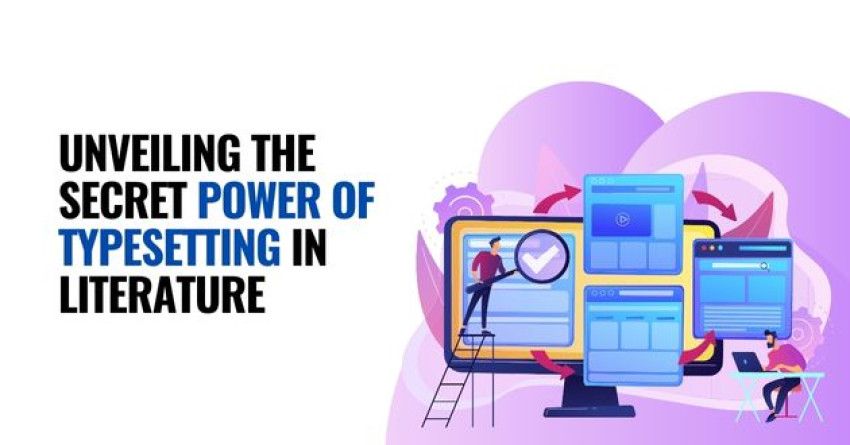
In literature, much attention is given to the words themselves—the prose, the poetry, the narratives that captivate our minds and hearts. We often take books for granted. We open them, lose ourselves in the narrative, and rarely consider the silent partner guiding our journey – the art of typesetting. Often seen as a technicality, typesetting holds a surprising power in shaping our literary experience. It is the invisible hand that orchestrates the rhythm, mood, and even the meaning of the written word.
Typesetting is a mode to arrange literature text on a page which ensures the visual presentation of literature and technologies. It should be readable and engaging. Simply, we can say that the collection of letters, words, grammarly and other elements is referred to as typesetting services. In this article, we will discuss the power of book typesetting and what are the impact of it in literature or on reader retention.
The Power of Typesetting
Imagine a playful children's book set in a stark, bold typeface. Dissonance, right? The typeface is the visual signal that we experienced first. That sets the tone for the story. A classic serif font stimulates a sense of elegance and timelessness and that will be perfect for a historical novel. Conversely, a whimsical sans-serif font like Helvetica might introduce a lighthearted contemporary tale.
The readability of a text hinges on several typesetting elements, including font choice, line spacing, and alignment. For example, the right font can typeset a book properly and make it more easy to approach. A fair line spacing ensures that the reader's eyes can move smoothly from one line to the next without any reading problem. Proper alignment and margins create a balanced page layout that guides the reader effortlessly through the text. Professional and creative typesetting can make reading a seamless and enjoyable experience, meanwhile poor typesetting can lead readers into frustration and disengagement.
How Typesetting Works in eBooks and Digital Formats?
In today's digital age, typesetting not only covers printed books but expands to eBooks and other electronic formats. The beauty of an eBook is that it requires responsive typesetting—so the copy can be viewed comfortably across varying screen sizes and resolutions. Your text remains readable and well defined and consistent through all kinds of devices from smartphones to e -readers. It is made possible by adapted technologies such as EPUB and MOBI formats that offer a device-agnostic experience to the readers.
Good typesetting is an art that combines elements with a lot of small contributions to the overall reading experience.
Font Choice and Its Impact
When it comes to typesetting, the right font plays the main role. Typography conveys the feeling and tone of the letters. This includes size and weight, where larger heavier fonts are often used for highlights and smaller lighter ones can be found on the body of the text.
Line Spacing — Margin And Alignment
By creating margins, and adding space around the text on a page, elements can breathe better — they don't become cluttered together which could make it harder for users to fully use that site. Alignment — alignment impacts how the text aligns with and against itself, giving it a structural tone.
Current Typesetting Tools and Technologies
Book typesetting services today use advanced software tools such as Adobe InDesign, QuarkXPress, and LaTeX. They allow more advanced features for controlling choice of layout, font, spacing etc on the text.
The Future of Typesetting in Literature
E-readers and audiobooks provide greater font size and spacing options, according to individual reading tastes. However, they also run the danger of creating a homogenized experience in which visual narrative takes a backseat. Interactive components, such as dynamic font sizes that change based on the device or subtle animations that enhance the story, can push the limits of typesetting.
Conclusion
Typesetting is a strong instrument in the book industry. It makes them easier to read and establishes the tone. Good typography is essential for readers. Even as books evolve with new technology, effective typography remains crucial. By concentrating on typography, writers and publishers may guarantee that their work is clear and pleasant. When you read, take a time to notice how the typography gives the text alive.
Typesetting is important in both physical and digital publications. It influences how we interpret a tale. It influences the flow, emotion, and meaning of the words. We should view books as more than simply words. They are a meticulously crafted visual and reading experience.


